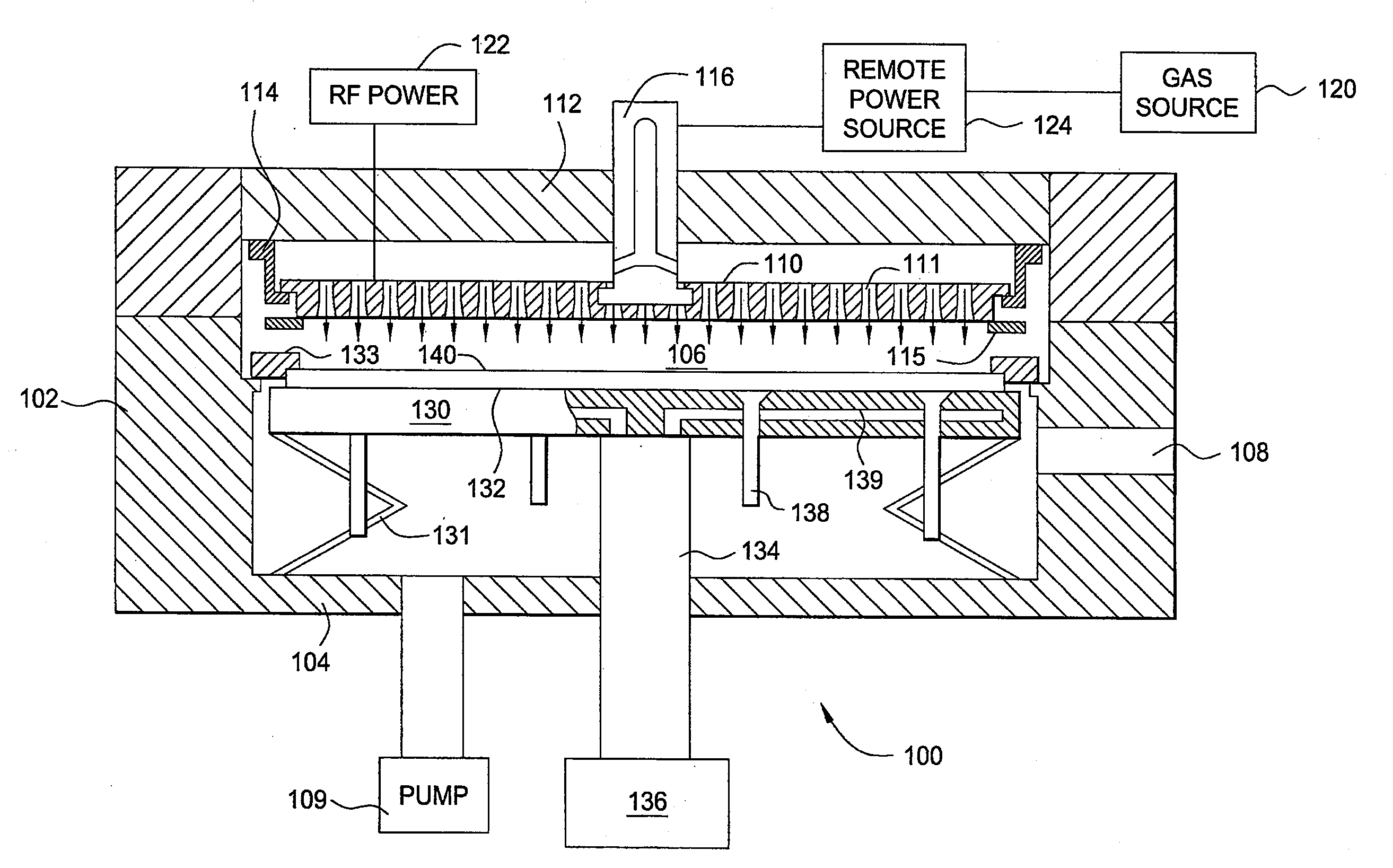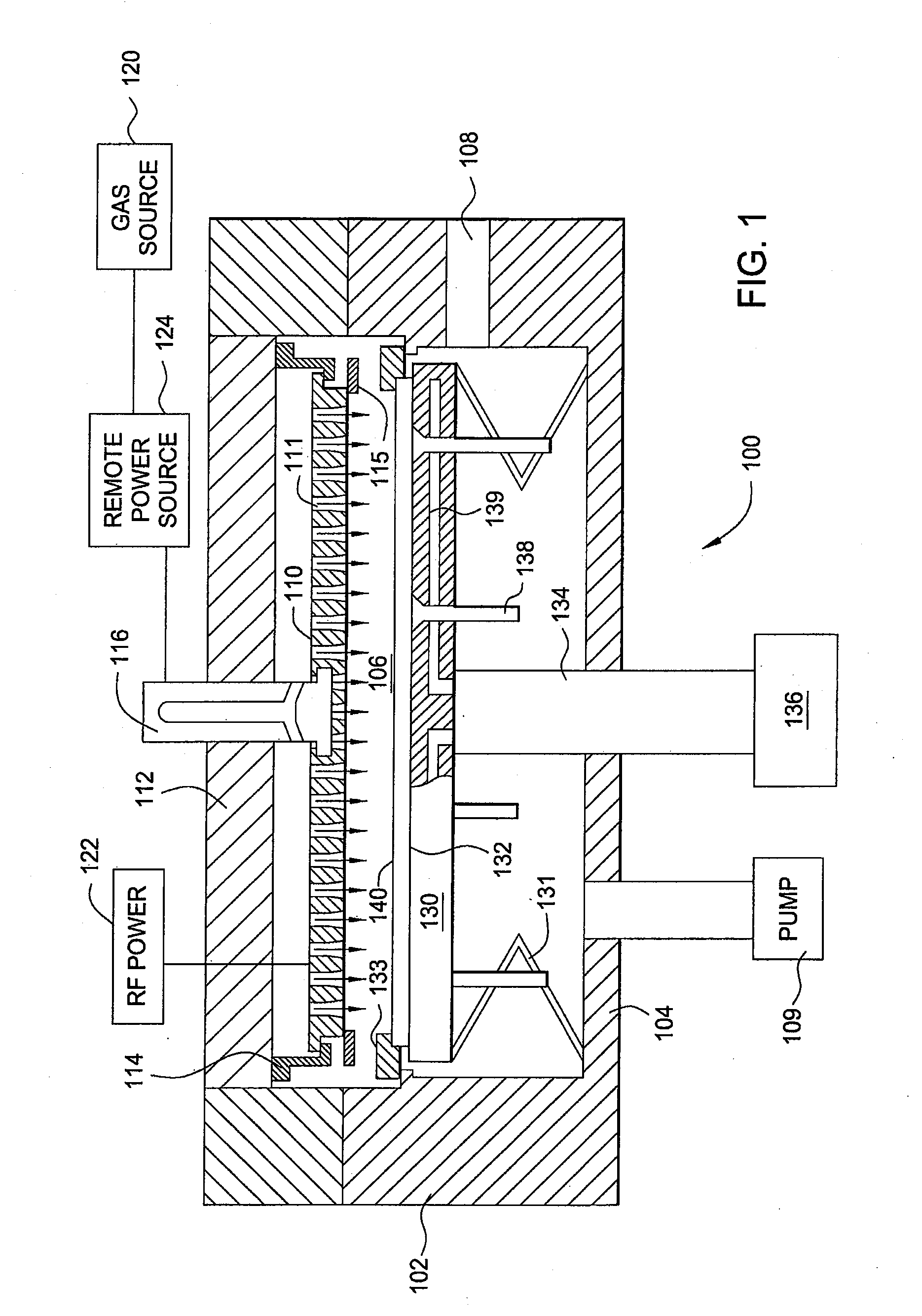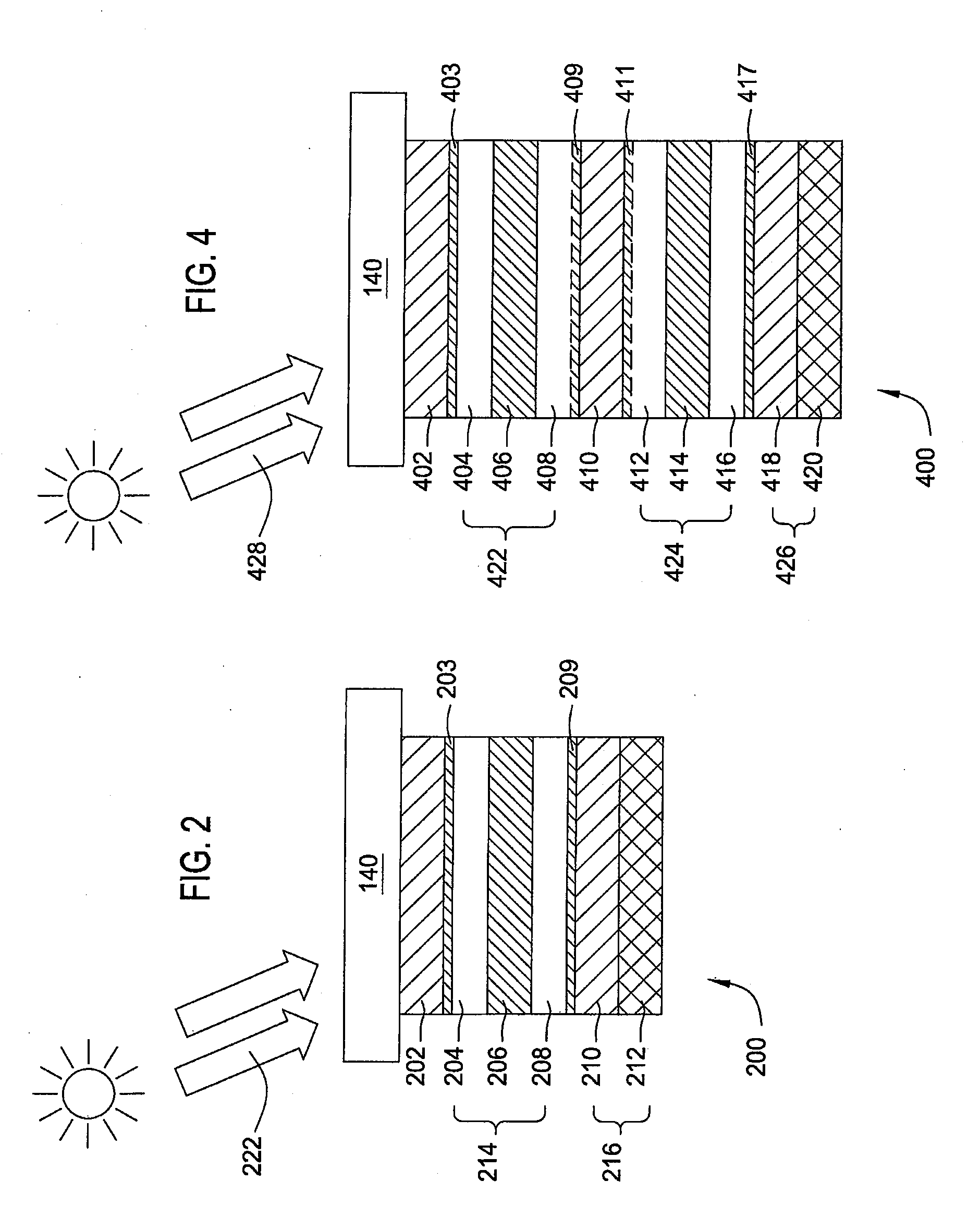Methods for forming a photovoltaic device with low contact resistance
a photovoltaic device and microcrystalline silicon technology, applied in the manufacture of final products, basic electric elements, coatings, etc., can solve the problems of low photoelectric conversion efficiency, high contact barrier, device failure, etc., and achieve the effect of high photoelectric conversion efficiency and low contact resistan
- Summary
- Abstract
- Description
- Claims
- Application Information
AI Technical Summary
Problems solved by technology
Method used
Image
Examples
Embodiment Construction
[0021]The present invention provides a structure of a PV solar cell with low contact resistance and high photoelectric conversion efficiency and methods for manufacturing the same. In one embodiment, a microcrystalline silicon (μc-Si) layer is disposed between an amorphous silicon (a-Si) based photoelectric conversion unit and a TCO layer to enhance the electrical properties of interfacial contact between the photoelectric conversion unit and the TCO layer.
[0022]FIG. 1 is a schematic cross-section view of one embodiment of a plasma enhanced chemical vapor deposition (PECVD) chamber 100 in which one or more films of a solar cell. One suitable plasma enhanced chemical vapor deposition chamber is available from Applied Materials, Inc., located in Santa Clara, Calif. It is contemplated that other deposition chambers, including those from other manufacturers, may be utilized to practice the present invention.
[0023]The chamber 100 generally includes walls 102, a bottom 104, a showerhead 1...
PUM
 Login to View More
Login to View More Abstract
Description
Claims
Application Information
 Login to View More
Login to View More - R&D
- Intellectual Property
- Life Sciences
- Materials
- Tech Scout
- Unparalleled Data Quality
- Higher Quality Content
- 60% Fewer Hallucinations
Browse by: Latest US Patents, China's latest patents, Technical Efficacy Thesaurus, Application Domain, Technology Topic, Popular Technical Reports.
© 2025 PatSnap. All rights reserved.Legal|Privacy policy|Modern Slavery Act Transparency Statement|Sitemap|About US| Contact US: help@patsnap.com



